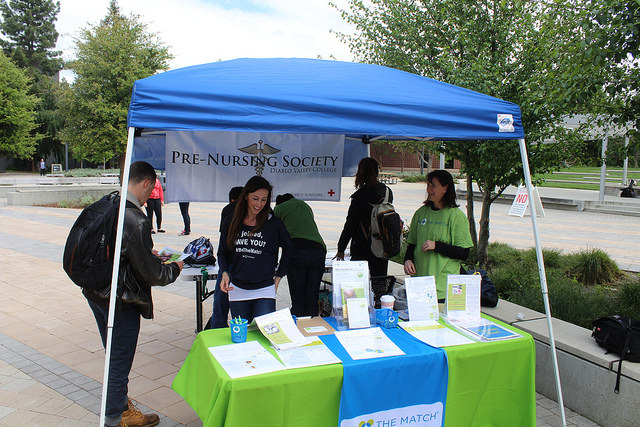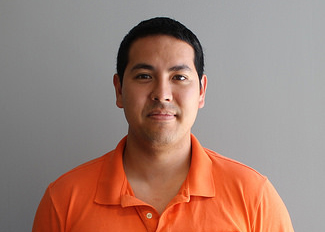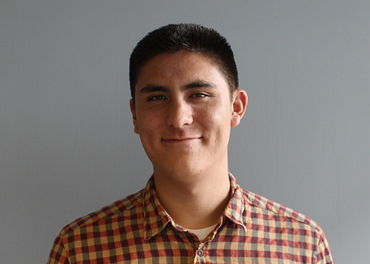DVC nurses and Science Alliance need YOU to help save lives
Members of DVC’s Pre-Nursing society held a bone marrow drive on Wednesday, April 12 at the Commons.
April 19, 2017
During an episode of the hit television series “House, M.D.” the team of doctors is forced to perform a bone marrow transplant without anesthetizing the patient.
The viewers watch a young boy strapped to a table writhe in agony as a giant needle is stuck into his hip and his bone marrow is extracted.
Afterwards one of the doctors remarks what he did was akin to torture.
While this makes for compelling television it creates misperceptions about how bone marrow donations actually work.
Dispelling these myths is one of the reasons why DVC’s Pre-Nursing Society and Science Alliance are holding a semester-long bone marrow drive.
On April 12, they partnered with Be the Match, a bone marrow registry, and Blood Banks of the Pacific to educate the community and recruit bone marrow and blood donors.
Despite the wet and soggy conditions they recruited 13 potential bone marrow donors.
The bone marrow drive is being held in honor of J.J., who at two days old was diagnosed with neutropenia, an abnormally low concentration of a type of white blood cell in the body.
J.J. is of mixed Latino and Caucasian heritage and according to Be the Match, only four percent of donors on the national registry are of mixed heritage.
For comparison according to DVC’s student success scorecard provided by the California Community Colleges Chancellor’s Office, eight percent of DVC’s population is of mixed race or ethnicity.
This matters because donors and recipients must match human leukocyte antigens (HLA) to increase the likelihood of a successful transplant. HLA types are inherited, so the best chance of finding a suitable donor may be with someone of a similar racial or ethnic background.
There are three ways people can donate bone marrow:
- The first is peripheral blood stem cell (PBSC) donation which is the collection of blood-forming cells also found in bone marrow. The procedure is nonsurgical and is essentially like a lengthier version of giving blood. According to the website bethematch.org the median recovery time is one week and side effects may include headaches, bone or muscle aches.
- The second is a surgical procedure that takes place in a hospital room. According to the website bethematch.org doctors use needles to withdraw liquid marrow from both sides of the pelvic bone. Donators are typically discharged the same day of the procedure and occasionally are kept for overnight observation. Common side effects reported two days after the procedure are back or hip pain, fatigue, throat pain, muscle pain, insomnia, headaches, dizziness, loss of appetite and nausea. The median recovery time is 20 days.
- The third way is to donate cord blood. Immediately after child birth blood is collected from the umbilical cord, not the baby. According to the website bethematch.org the advantages of cord blood are it doesn’t have to be as closely matched to the patient as a marrow donor, so it may be an option for patients with uncommon tissue types. Cord blood is ready to use for patients who need a transplant right away. Studies have found that a complication called graft-versus-host disease is less common and less severe after cord blood transplants than after PBSC transplants.
Although the side effects may give potential donors second thoughts, Stephanie Engle, the president of DVC’s Pre-Nursing Society likes to keep things in perspective saying, “people are hesitant to do it, (you are) unlikely to be picked but if you do, could be the one in a million that saves a life.”
The next bone marrow drive will take place on campus on April 27 from 9:30 a.m. to 2:30 p.m.
Staff member’s note: An earlier version of this article has been corrected to reflect the Science Alliance’s participation in the bone marrow drive.







































































